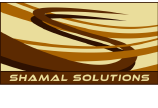Global Enhanced Oil Recovery (EOR) Market Review 2014-2019 and Forecast to 2025 - ResearchAndMarkets.com
The "Enhanced Oil Recovery (EOR) Market Size, Share & Trends Analysis Report By Technology (Thermal, Chemical, Gas Injection), By Application (Onshore, Offshore), By Region, And Segment Forecasts, 2019 - 2025" report has been added to ResearchAndMarkets.com's offering.
The global enhanced oil recovery (EOR) market size is expected to reach USD 88.54 billion by 2025.
The market is projected to expand at an estimated CAGR of 6.8% from 2019 to 2025. Increasing number of aged wells coupled with the rising oil demand globally are the key factors for market growth.
Asia-Pacific is projected to expand at a CAGR of 8.1% over the forecast period owing to the increasing population coupled with rapid urbanization leading to the surge in demand for enhanced oil recovery. Adoption of competitive strategies by the international players operating in this region are anticipated to further fuel the growth.
Prominent companies are investing in R&D activities and are setting up collaborative research projects for inventive product development. In collaboration with the Petroleum Institute Research Center (PIRC), UAE has established Pressure-Volume-Temperature (PVT) laboratory and is inclined towards conducting fluid analysis for enhanced oil recovery techniques to accomplish increased productivity in target wells.
Thermal tertiary extraction was the most prominent EOR technology and generated a total revenue of USD 22.68 billion in 2018. Gas injection technology is projected to witness the fastest CAGR of 4.9% in terms of the volume of hydrocarbon produced over the forecast period.
Further key findings from the report suggest:
- The total oil produced from EOR operations in 2018 globally was estimated to be around 996 million barrels
- Onshore application segment held the leading market share of over 90% in 2018
- North America led the global Enhanced Oil Recovery (EOR) market with a share of over 38% in 2018 in terms of volume and is expected to expand at a CAGR of 4.8% over the forecast period
- U.S. gas injection EOR market is estimated to register a CAGR of 7.7% from 2019 to 2025. Growing deployment of CO2 injection due to high rate of recovery along with favorable government legislation's related to the Carbon Capture and Sequestration (CCS) technique is projected to steer growth of the segment
- The market is partially competitive and consolidated in nature, with the presence of multinational players operating in specific regions
- Some of the major companies operating in the global EOR market include ExxonMobil Corporation, Royal Dutch Shell plc, Chevron, Praxair Technology, Inc., Sinopec, China National Petroleum Corporation (CNPC), and BP plc
Key Topics Covered
Chapter 1. Methodology and Scope
Chapter 2. Executive Summary
2.1. Market Outlook
2.2. Segmental Outlook
2.3. Competitive Insights
Chapter 3. Enhanced Oil Recovery Market Variables, Trends, & Scope
3.1. Penetration & Growth Prospect Mapping
3.2. Industry Value Chain Analysis
3.3. Technology Overview
3.3.1. Carbon Capture & Sequestration (CCS) and CO2 injection
3.3.2. Potential of Gas Injection Technology
3.4. Current EOR Projects in the U.S. (Caselets)
3.5. Regulatory Framework
3.5.1. Product Classification Codes
3.5.2. Standard & Compliances
3.5.3. Safety
3.6. Market Dynamics
3.6.1. Market Driver Analysis
3.6.2. Market Restraint Analysis
3.6.3. Industry Challenges
3.7. Chemical EOR Outlook
3.7.1. U.S. EOR Economics
3.7.2. Cost Break-up Analysis
3.7.3. Chemical Analysis
3.7.3.1. Polymers
3.7.3.2. Surfactants
3.7.3.3. Alkaline Chemicals
3.7.3.4. Alkali-Surfactant-Polymer (ASP) Formulations
3.7.3.5. Foamers
3.7.4. Recent & Planned Chemical EOR Projects
3.7.5. Benefits of Polymers EOR
3.7.6. Limitations of EOR Technologies
3.7.7. Variables Affecting EOR Operations
3.8. Business Environment Analysis: Aerosol Propellants Market
3.8.1. Industry Analysis - Porter's
3.8.1.1. Supplier Power
3.8.1.2. Buyer Power
3.8.1.3. Substitution Threat
3.8.1.4. Threat from New Entrant
3.8.1.5. Competitive Rivalry
3.8.2. PESTEL Analysis
3.8.2.1. Political Landscape
3.8.2.2. Environmental Landscape
3.8.2.3. Social Landscape
3.8.2.4. Technology Landscape
3.8.2.5. Economic Landscape
3.8.2.6. Legal Landscape
3.8.3. Major Deals & Strategic Alliances Analysis
Chapter 4. Enhanced Oil Recovery Market: Technology Estimates & Trend Analysis
4.1. Definition & Scope
4.2. Technology Movement Analysis & Market Share, 2018 & 2025
4.3. Market size & forecasts and trend analysis, 2014 to 2025 for the following
4.4. Thermal
4.5. Gas Injection
4.6. Chemical
4.7. Other EOR
Chapter 5. EOR Chemicals Market: Product Estimates and Trend Analysis
5.1. Definition & Scope
5.2. EOR Chemicals (Product) Movement Analysis & Market Share, 2018 & 2025
5.3. Market size & forecasts and trend analysis, 2014 to 2025 for the following
5.4. Polymer
5.5. Surfactant
5.6. Alkaline Chemicals
5.7. Alkali-Surfactant-Polymer Formulations
5.8. Foamers
5.9. Others
Chapter 6. Enhanced Oil Recovery Market: Application Estimates & Trend Analysis
6.1. Definition & Scope
6.2. Application Movement Analysis & Market Share, 2018 & 2025
6.3. Market size & forecasts and trend analysis, 2014 to 2025 for the following
6.4. Onshore
6.5. Offshore
Chapter 7. Aerosol Propellants Market: Regional Estimates & Trend Analysis
7.1. Regional Market Snapshot
7.2. SWOT Analysis, by Factor (Political & Legal, Economic And Technological)
7.3. Market Size & Forecasts and Trend Analysis, 2014 to 2025
7.4. North America
7.5. Europe
7.6. Asia-Pacific
7.7. Latin America
7.8. Middle East & Africa
Chapter 8. Competitive Landscape
8.1. Key Global Players & Recent Developments & Their Impact On The Industry
8.2. Key Company/Competition Categorization
8.3. Vendor Landscape
8.3.1. List of key Distributors And Channel Partners
8.3.1.1. List of Chemical Distributors
8.3.2. Key Company Market Share Analysis, 2018
8.3.3. Company Ranking Assessment - EOR Chemicals
8.3.3.1. Competitive Heat Map Analysis
8.4. Competitive Environment
8.5. Strategy Framework
Chapter 9. Company Profiles
9.1. ExxonMobil Corporation
9.1.1. Company Overview
9.1.2. Financial Performance
9.1.3. Product Benchmarking
9.1.4. Strategic Initiatives
9.2. BP plc
9.3. China Petroleum & Chemical Corporation
9.4. Royal Dutch Shell plc
9.5. Chevron Phillips Chemical Company LLC
9.6. Petroliam Nasional Berhad (Petronas)
9.7. Nalco Champion
9.8. Statoil ASA
9.9. Lukoil Oil Company
9.10. Praxair, Inc.
9.11. Petroleo Brasileiro S.A.
9.12. Cenovus Energy Inc.
For more information about this report visit https://www.researchandmarkets.com/r/cvy6b6
View source version on businesswire.com: https://www.businesswire.com/news/home/20190821005425/en/





